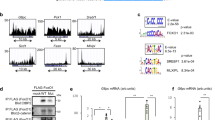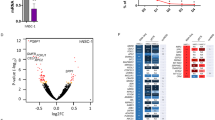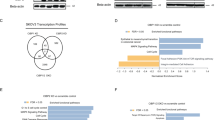Abstract
The C-terminal binding protein 1 (CtBP) is a ubiquitous corepressor linking the recruitment of DNA- and histone-modifying proteins to sequence-specific DNA-binding proteins and facilitating gene regulation during development and oncogenesis. We describe here the binding, phosphorylation and functional regulation of CtBP by the p21-activated kinase 1 (Pak1). Pak1 phosphorylates CtBP selectively on Ser158 within a putative regulatory loop, triggering CtBP cellular redistribution and blocking CtBP corepressor functions. A S158A substitution in CtBP or Pak1 knockdown by short interference RNA blocked CtBP phosphorylation, redistribution and attenuation of CtBP corepressor functions in reporter and chromatin assays. In the presence of NADH, Pak1 superphosphorylates CtBP and inhibits CtBP dehydrogenase activity, suggesting that preferential phosphorylation of active CtBP may alter secondary structures and influence both enzymatic and corepressor functions. Pak1 regulation of CtBP represents a new model of corepressor regulation whereby cellular signaling cascades may influence gene expression in mammalian cells.
This is a preview of subscription content, access via your institution
Access options
Subscribe to this journal
Receive 12 print issues and online access
$259.00 per year
only $21.58 per issue
Buy this article
- Purchase on SpringerLink
- Instant access to full article PDF
Prices may be subject to local taxes which are calculated during checkout






Similar content being viewed by others
Accession codes
References
Schaeper, U. et al. Molecular cloning and characterization of a cellular phosphoprotein that interacts with a conserved C-terminal domain of adenovirus E1A involved in negative modulation of oncogenic transformation. Proc. Natl. Acad. Sci. USA 92, 10467–10471 (1995).
Boyd, J.M. et al. A region in the C-terminus of adenovirus 2/5 E1a protein is required for association with a cellular phosphoprotein and important for the negative modulation of T24-ras mediated transformation, tumorigenesis and metastasis. EMBO J. 12, 469–478 (1993).
Kumar, V. et al. Transcription corepressor CtBP is an NAD(+)-regulated dehydrogenase. Mol. Cell 10, 857–869 (2002).
Chinnadurai, G. CtBP, an unconventional transcriptional corepressor in development and oncogenesis. Mol. Cell 9, 213–224 (2002).
Sewalt, R.G., Gunster, M.J., van der Vlag, J., Satjin, D.P.E. & Otte, A.P. C-terminal binding protein is a transcriptional repressor that interacts with a specific class of vertebrate Polycomb proteins. Mol. Cell. Biol. 19, 777–787 (1999).
Schaeper, U., Subramanian, T., Lim, L., Boyd, J.M. & Chinnadurai, G. Interaction between a cellular protein that binds to the C-terminal region of adenovirus E1A (CtBP) and a novel cellular protein is disrupted by E1A through a conserved PLDLS motif. J. Biol. Chem. 273, 8549–8552 (1998).
Yu, X. & Baer, R. Nuclear localization and cell cycle-specific expression of CtIP, a protein that associates with the BRCA1 tumor suppressor. J. Biol. Chem. 275, 18541–18549 (2000).
Meloni, A.R., Smith, E.J. & Nevins, J.R. A mechanism for Rb/p130-mediated transcription repression involving recruitment of the CtBP corepressor. Proc. Natl. Acad. Sci. USA 96, 9574–9579 (1999).
Koipally, J. & Georgopoulos, K. Ikaros interactions with CtBP reveal a repression mechanism that is independent of histone deacetylase activity. J. Biol. Chem. 275, 19594–19602 (2000).
Kumar, R. & Vadlamudi, R. Emerging functions of p21-activated kinases in human cancer cells. J. Cell Physiol. 193, 133–144 (2002).
Adam, L. et al. Heregulin regulates cytoskeletal reorganization and cell migration through the p21-activated kinase-1 via phosphatidylinositol-3 kinase. J. Biol. Chem. 273, 28238–28246 (1998).
Adam, L., Vadlamudi, R.K., Mandal, M., Chernoff, J. & Kumar, R. Regulation of microfilament reorganization and invasiveness of breast cancer cells by kinase dead p21-activated kinase-1. J. Biol. Chem. 275, 12041–12050 (2000).
Vadlamudi, R.K. et al. Regulatable expression of p21-activated kinase-1 promotes anchorage-independent growth and abnormal organization of mitotic spindles in human epithelial breast cancer cells. J. Biol. Chem. 275, 36238–36244 (2000).
Bagheri-Yarmand, R. et al. Etk/Bmx tyrosine kinase activates Pak1 and regulates tumorigenicity of breast cancer cells. J. Biol. Chem. 276, 29403–29409 (2001).
Thiel, D.A. et al. Cell cycle-regulated phosphorylation of p21-activated kinase 1. Curr. Biol. 12, 1227–1232 (2002).
Banerjee, M., Worth, D., Prowse, D.M. & Nikolic, M. Pak1 phosphorylation on T212 affects microtubules in cells undergoing mitosis Curr. Biol. 12, 1233–1239 (2002).
Li, F. et al. p21-activated kinase 1 interacts with and phosphorylates histone H3 in breast cancer cells. EMBO Rep. 3, 767–773 (2002).
Yablonski, D., Kane, L.P., Qian, D. & Weiss, A. A Nck-Pak1 signaling module is required for T-cell receptor-mediated activation of NFAT, but not of JNK. EMBO J. 17, 5647–5657 (1998).
Wang, R.A. et al. p21-activated kinase-1 phosphorylates and transactivates estrogen receptor-α and promotes hyperplasia in mammary epithelium. EMBO J. 21, 5437–5447 (2002).
Zhang, Q., Piston, D.W. & Goodman, R.H. Regulation of corepressor function by nuclear NADH. Science 295, 1895–1897 (2002).
Mazumdar, A. et al. Transcriptional repression of oestrogen receptor by metastasis-associated protein 1 corepressor. Nat. Cell Biol. 3, 30–37 (2001).
Weigert, R. et al. CtBP/BARS induces fission of Golgi membranes by acylating lysophosphatidic acid. Nature 402, 429–433 (1999).
Kagey, M.H., Melhuish, T.A. & Wotton, D. The Polycomb protein Pc2 is a SUMO E3. Cell 113, 127–137 (2003).
Lin, X. et al. Opposed regulation of corepressor CtBP by SUMOylation and PDZ Binding. Mol. Cell 11, 1389–1396 (2003).
Vadlamudi, R.K. et al. Filamin is essential for p21-activated kinase 1-mediated actin cytoskeletal assembly. Nat. Cell Biol. 4, 681–690 (2002).
Barnes, C.J. et al. Heregulin induces expression, ATPase activity, and nuclear localization of G3BP, a Ras signaling component, in human breast tumors. Cancer Res. 62, 1251–1255 (2002).
Kumar, R. et al. A naturally occurring MTA1 variant sequesters estrogen receptor in the cytoplasm. Nature 418, 654–657 (2002).
Acknowledgements
The authors thank G. Chinnadurai for providing a CtBP antibody, J. Chernoff for the Pak1 constructs, K. Georgopoulos for the Flag-CtBP constructs and critical reading of this manuscript, E. Fearon for the pGL2-E-cadherin promoter luciferase reporter, A. Hall for the V12 CDC42 construct, V. Kumar and A. Aggarwal for helpful discussion, and M.-C. Hung for the E1A vector. This work was supported by the US National Institutes of Health grants (R.K.) and in part by an M.D. Anderson Cancer Center Institutional Research Award (C.J.B.).
Author information
Authors and Affiliations
Corresponding author
Ethics declarations
Competing interests
The authors declare no competing financial interests.
Rights and permissions
About this article
Cite this article
Barnes, C., Vadlamudi, R., Mishra, S. et al. Functional inactivation of a transcriptional corepressor by a signaling kinase. Nat Struct Mol Biol 10, 622–628 (2003). https://doi.org/10.1038/nsb957
Received:
Accepted:
Published:
Issue date:
DOI: https://doi.org/10.1038/nsb957
This article is cited by
-
Coordinated dysregulation of cancer progression by the HER family and p21-activated kinases
Cancer and Metastasis Reviews (2020)
-
FBXO32 promotes microenvironment underlying epithelial-mesenchymal transition via CtBP1 during tumour metastasis and brain development
Nature Communications (2017)
-
Signaling coupled epigenomic regulation of gene expression
Oncogene (2017)
-
Group I p21-activated kinases facilitate Tax-mediated transcriptional activation of the human T-cell leukemia virus type 1 long terminal repeats
Retrovirology (2013)
-
Components of the CtBP1/BARS-dependent fission machinery
Histochemistry and Cell Biology (2013)



